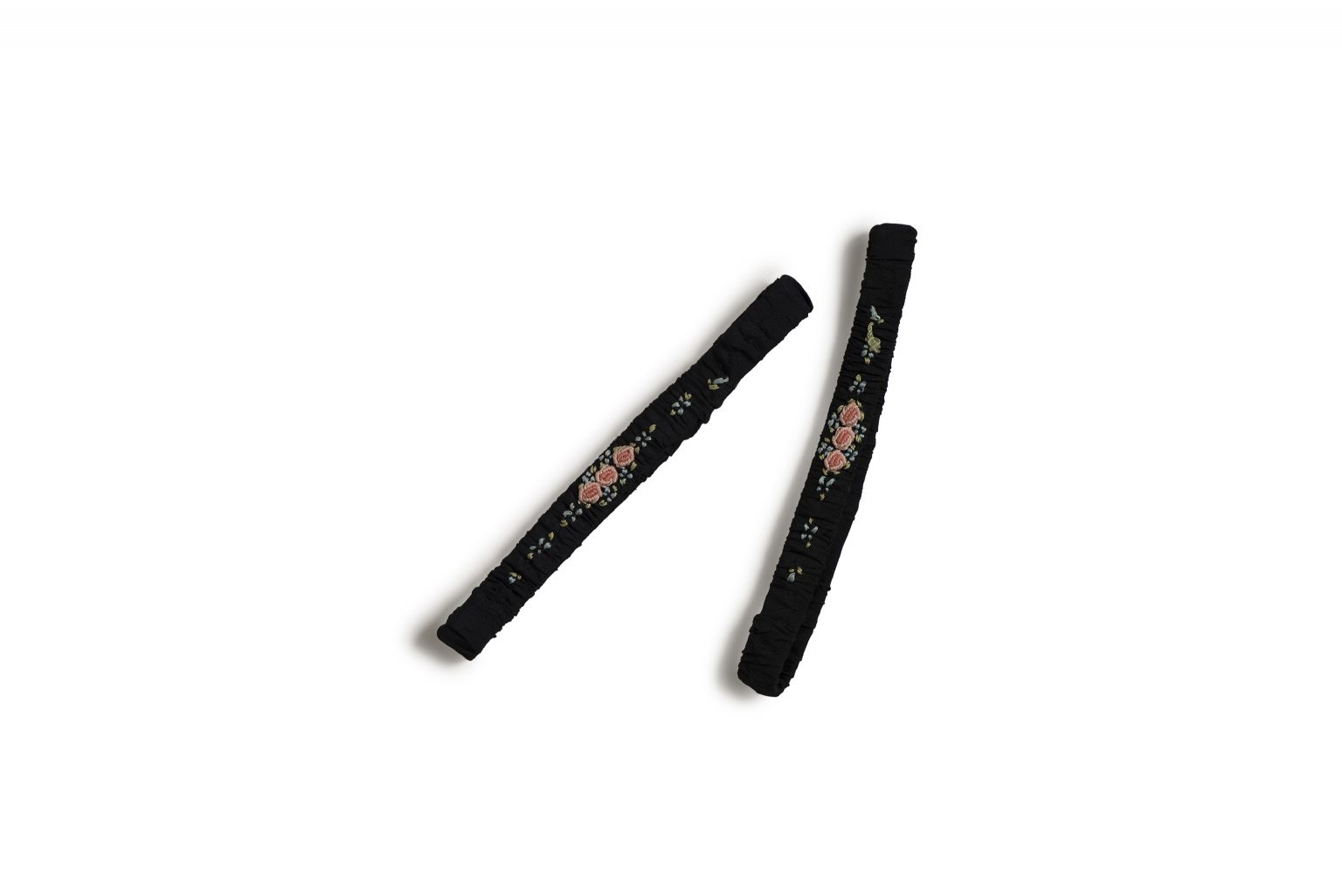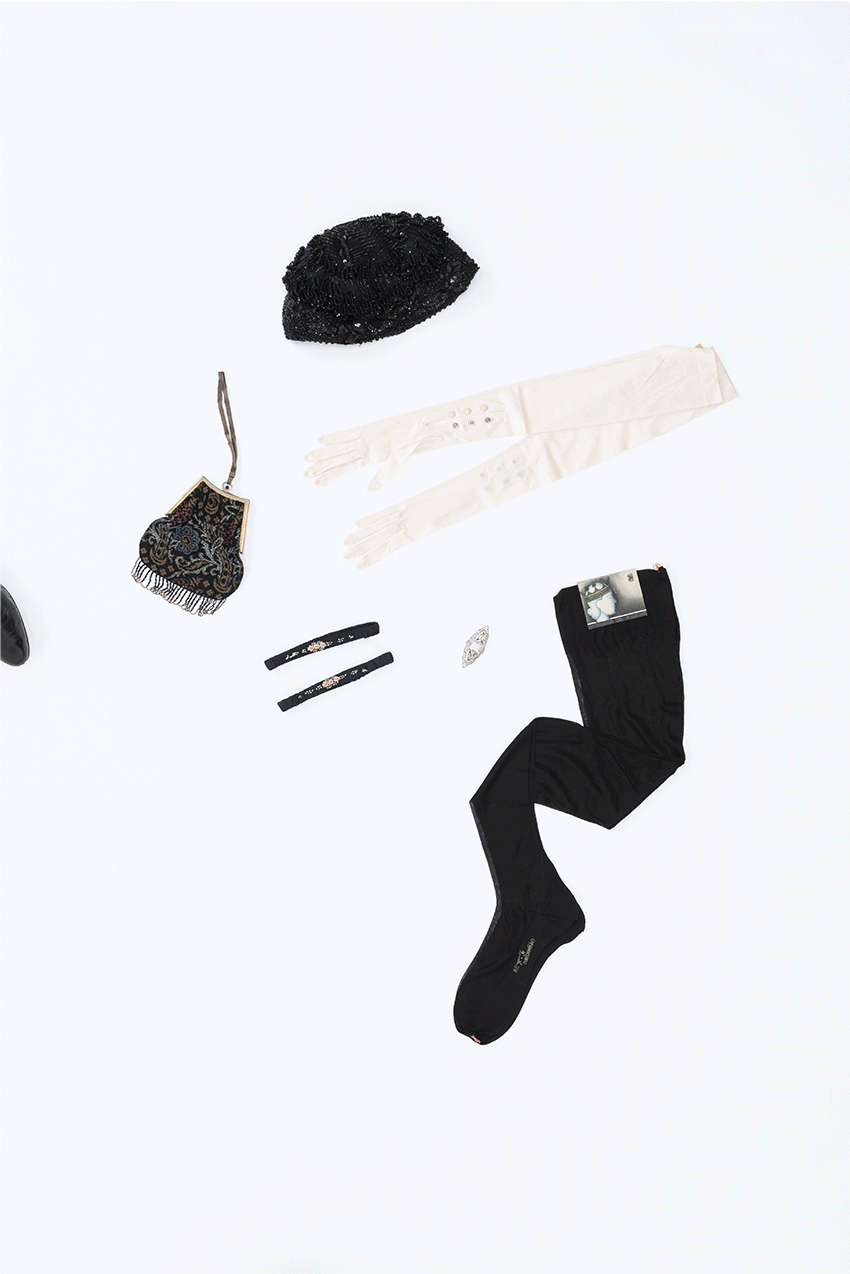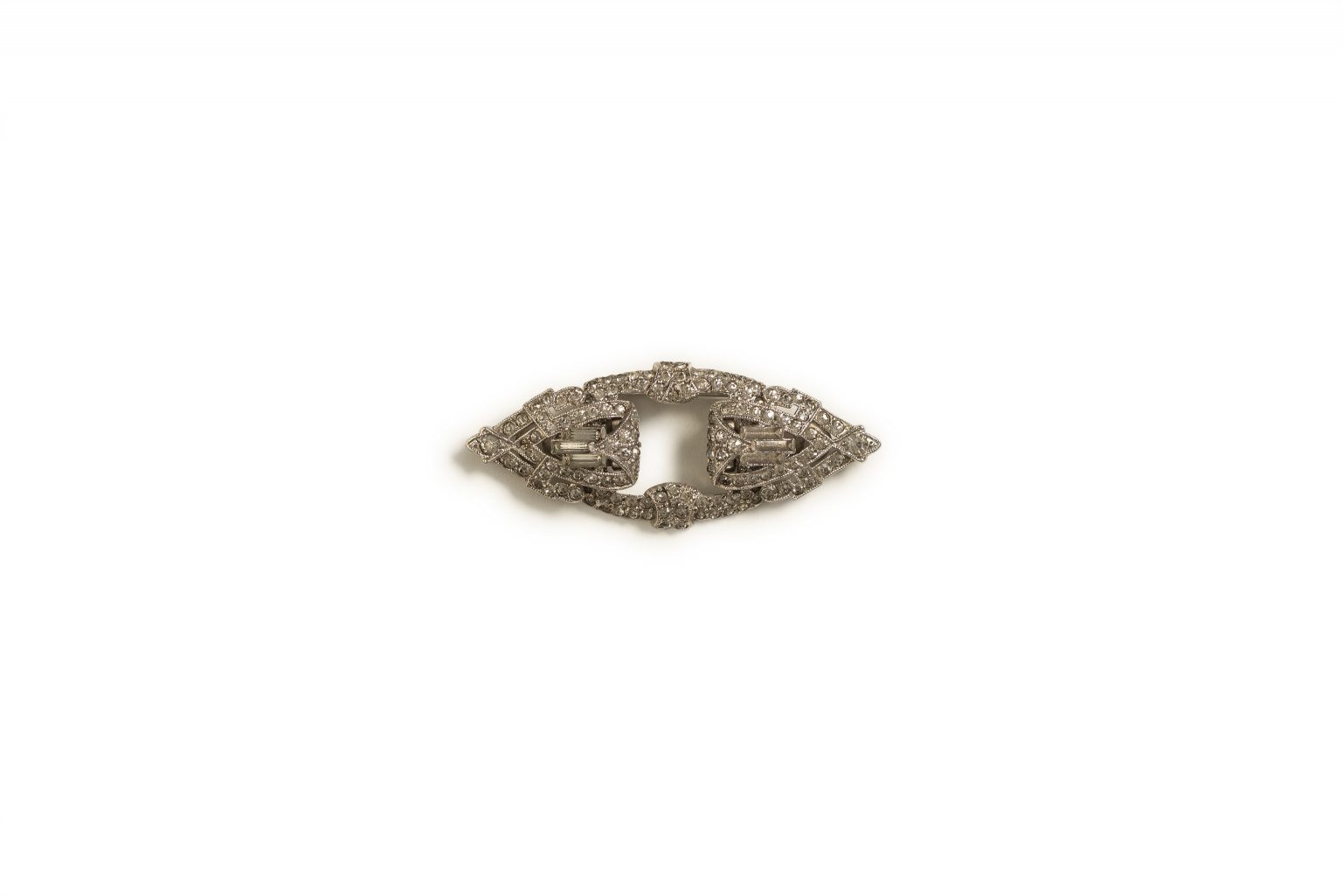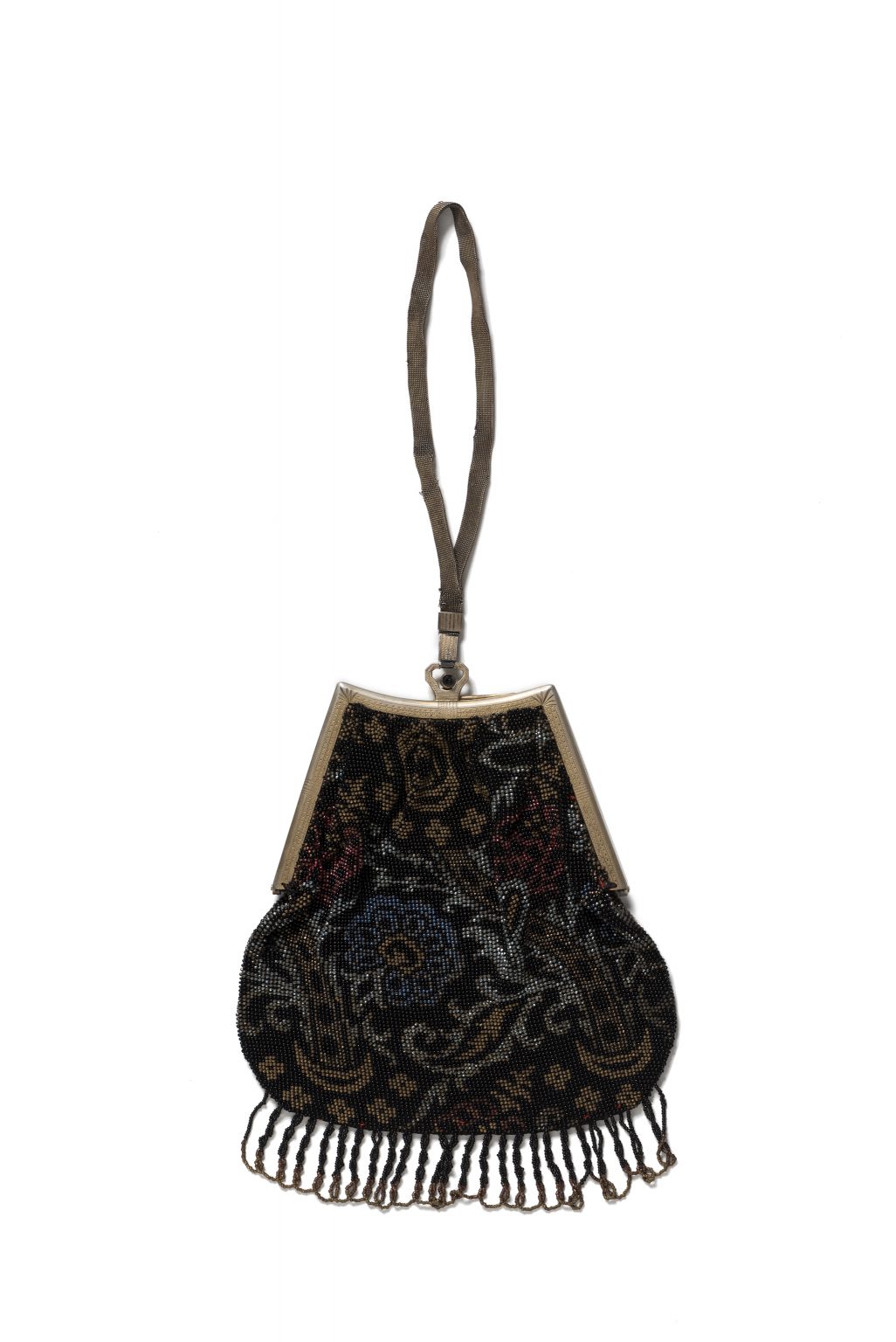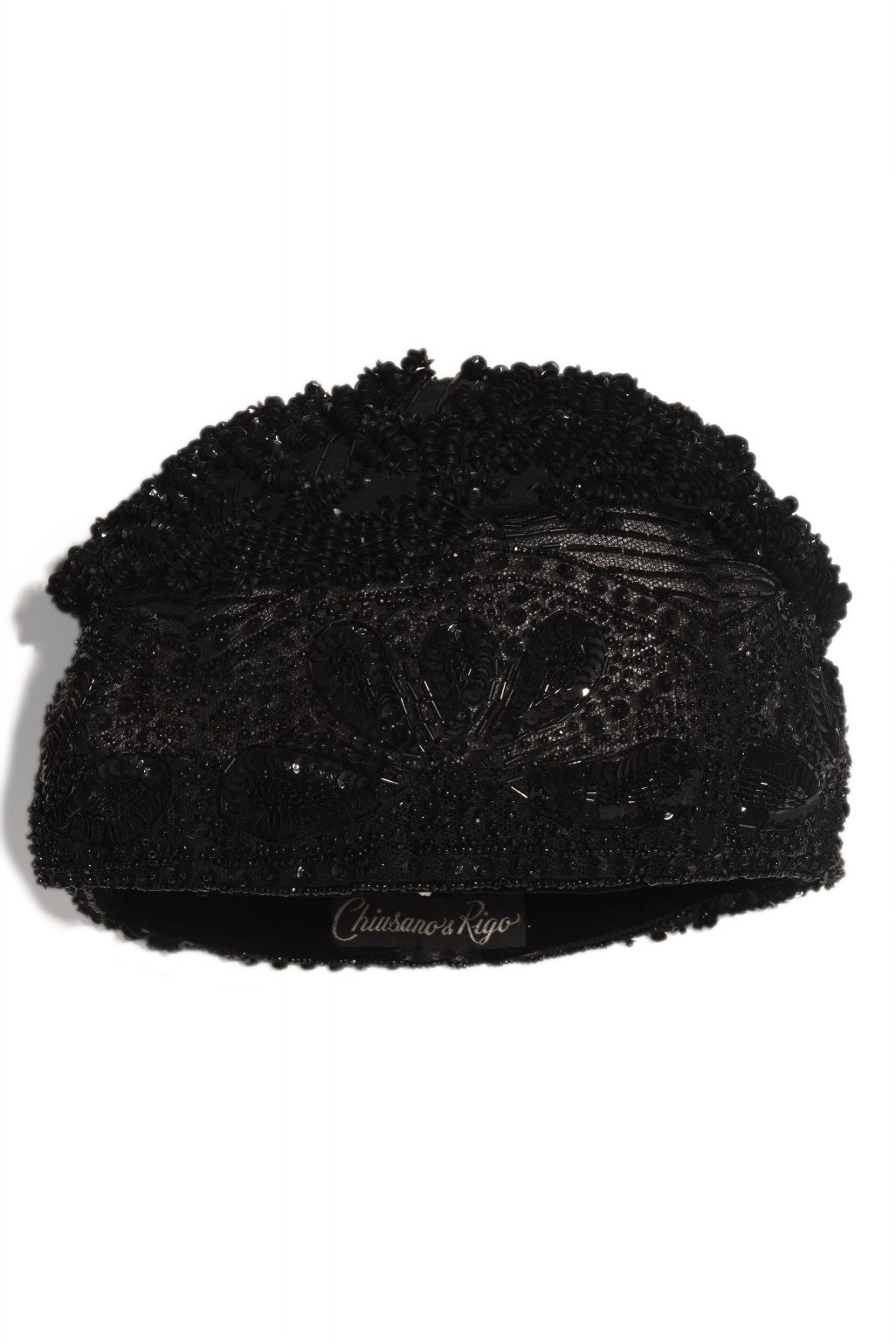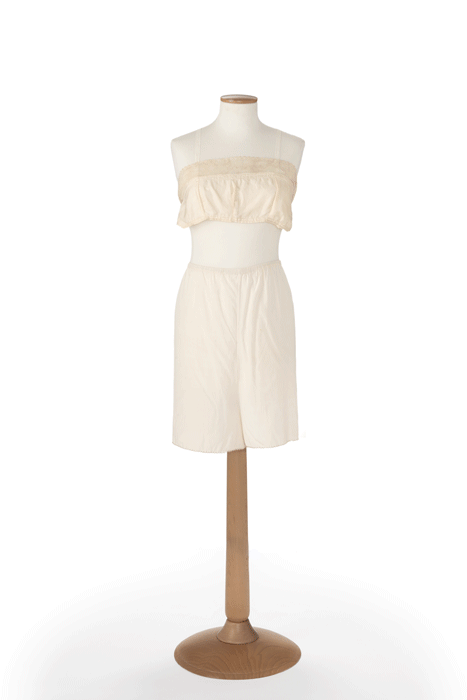
total look 1925
Sleeveless drop-waisted evening dress in black silk tulle with extensive glass beading and black sequin embroidery, circa 1925-29, Camilla Colombo Collection.
Black overcoat in silk satin crepe with satin details and cutwork embroidery, circa 1927-1931, Camilla Colombo Collection.
Velvet cloche with synthetic beads, label Chisano & Rigo Turin, circa 1924, Camilla Colombo Collection.
Details
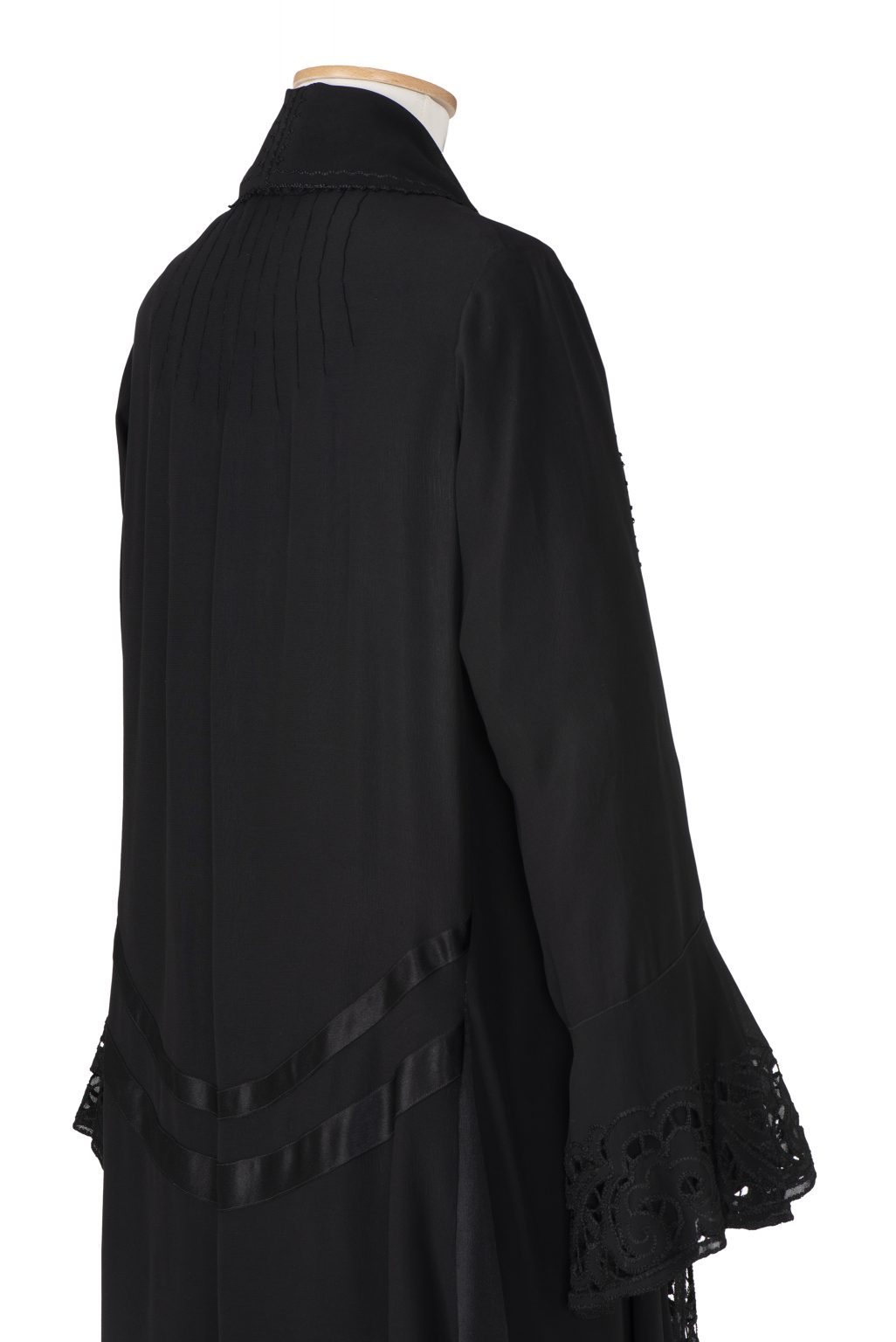
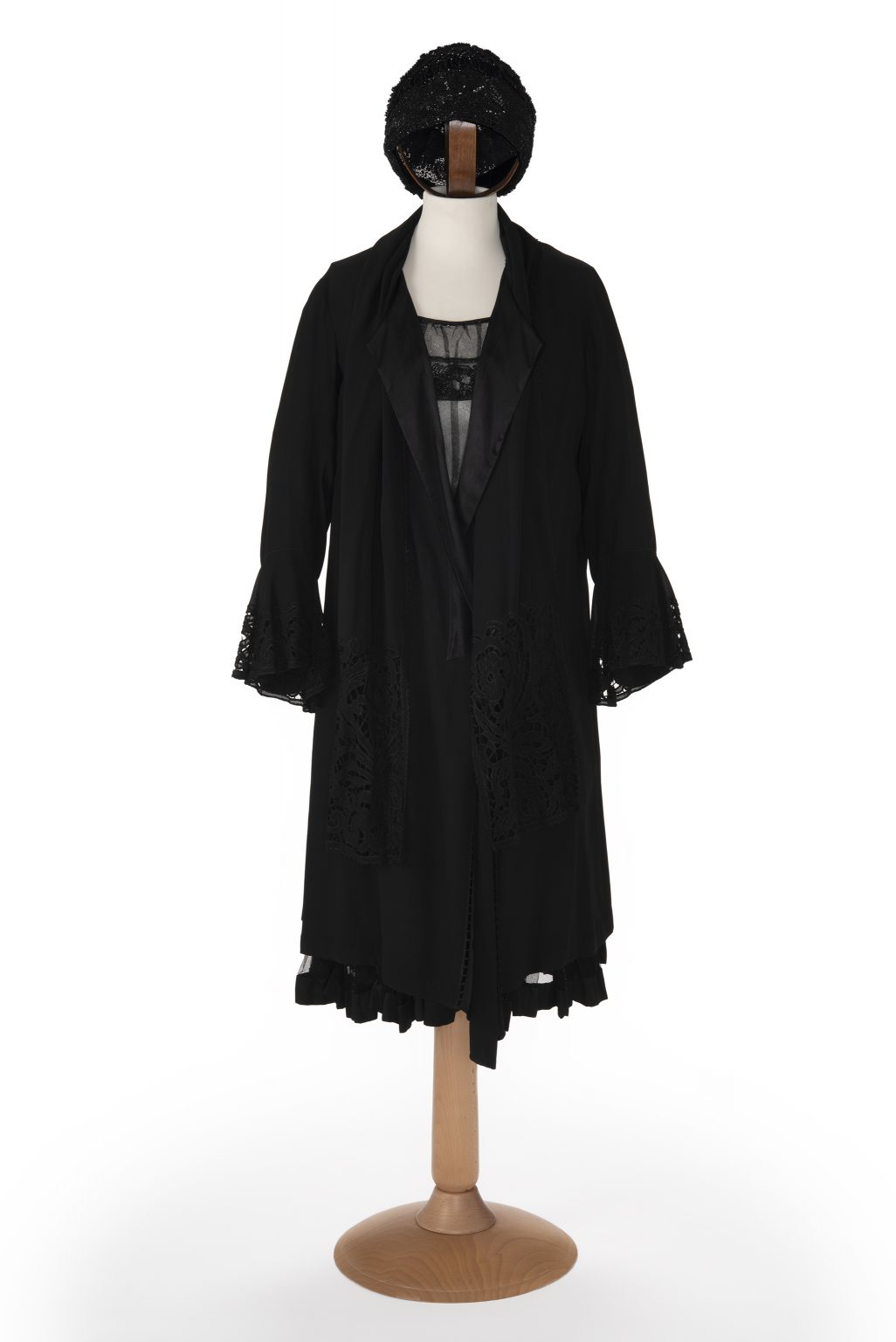
Fashion
The Cloche is the iconic hat of the 1920s. Its close-fitting shape is reminiscent of a bell, as its French name implies. Its invention is attributed to the “queen of milliners” Caroline Reboux as early as 1908, but it only reached widespread popularity over a decade later. This new model is a major change from the big, ostentatious hats of the beginning of the century. The cloche, in line with the fashion of the period, is considerably smaller in size. The brim, which can be curled, tilted like a small visor or pointed downwards, is only 5 cm wide at the beginning of the decade, and keeps getting smaller until it is almost non-
existent towards the 1930s, transforming the cloche into a helmet shape. Decorations are reduced to a minimum: ribbon trimmings and geometric embroidery delicately applied on one side for daytime; feathers, bejewelled pins or sequin and bead embroidery for the evening. At the same time, hairstyles changed radically during these years. The “bob” a very short, straight or wavy cut, became popular. The cloche suited the hairstyle, framing the face and covering the forehead to the eyebrows, leaving only the eyes and a few strands of short hair visible. Women walked with their chin up and eyes down, creating an air of self-confidence and independence.
